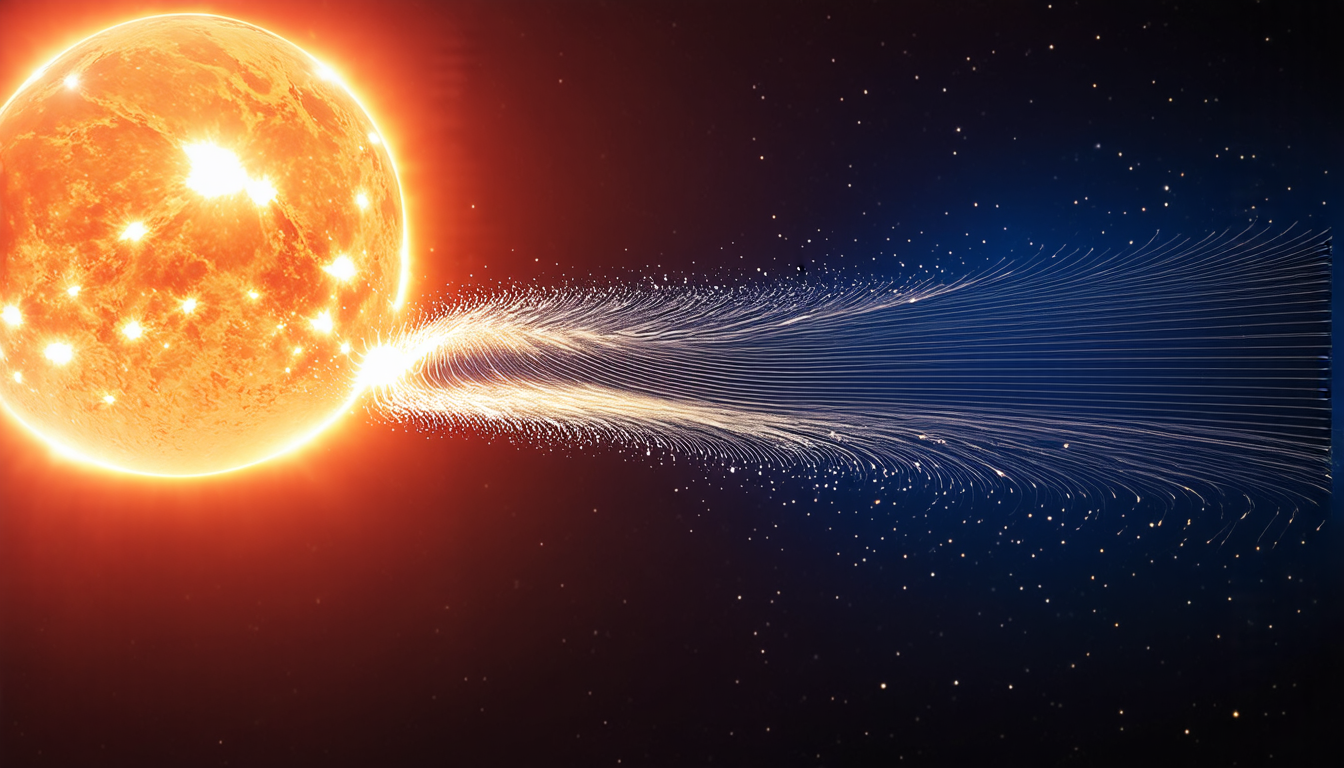Sunday 04 May 2025
Scientists have long been fascinated by the complex and dynamic behavior of the solar wind, a stream of charged particles emanating from the sun. Now, researchers have made a significant breakthrough in understanding this phenomenon, shedding light on its non-linear properties and offering new insights into the workings of the universe.
The solar wind is characterized by intense magnetic fields and turbulent flows of plasma, which can affect the Earth’s magnetic field and even disrupt communication systems. To better comprehend these complex interactions, researchers have been studying the statistical properties of the solar wind, looking for patterns that could help them predict its behavior.
One approach has been to apply a concept known as non-extensive statistical mechanics, developed by physicist Constantino Tsallis in the 1980s. This theory posits that certain systems can exhibit non-linear behaviors, where small changes have disproportionate effects on the system’s overall properties.
In the case of the solar wind, researchers have found evidence of these non-linear properties using data from NASA’s Wind spacecraft and other instruments. By analyzing the plasma density and magnetic field strength in the solar wind, scientists were able to identify patterns that suggest a non-extensive statistical distribution, rather than the traditional Gaussian or Boltzmann distributions.
This finding has significant implications for our understanding of the solar wind and its interactions with the Earth’s magnetic field. For instance, it could help researchers better predict when and where solar storms will occur, which is crucial for protecting satellite communications and navigation systems.
Moreover, this discovery opens up new avenues for studying other complex systems in the universe, from black holes to galaxy clusters. By understanding how non-linear properties shape the behavior of these systems, scientists can gain valuable insights into their evolution and dynamics over time.
The study’s findings are also significant because they demonstrate the power of interdisciplinary research, combining insights from physics, astronomy, and statistics to tackle complex problems. As researchers continue to explore the mysteries of the solar wind and other complex systems, this breakthrough serves as a testament to the importance of collaboration and innovative thinking in advancing our understanding of the universe.
In the future, scientists plan to use this new knowledge to develop more accurate models of the solar wind’s behavior, which will enable better forecasting of space weather events. This research has far-reaching implications for our ability to protect critical infrastructure and ensure the reliability of global communication systems.
Cite this article: “Unlocking the Secrets of the Solar Winds Non-Linear Behavior”, The Science Archive, 2025.
Solar Wind, Non-Extensive Statistical Mechanics, Plasma Density, Magnetic Field Strength, Nasa’S Wind Spacecraft, Satellite Communications, Navigation Systems, Space Weather Events, Global Communication Systems, Black Holes.







